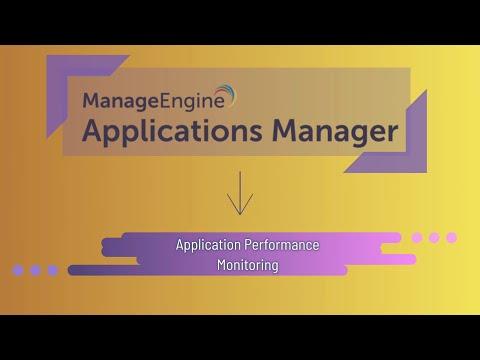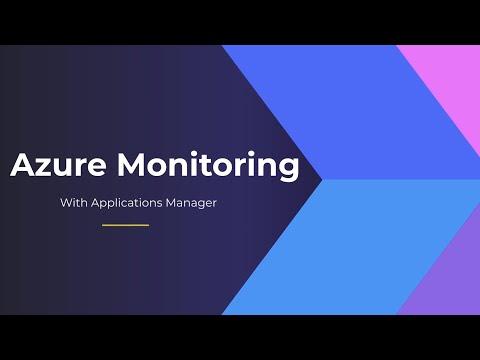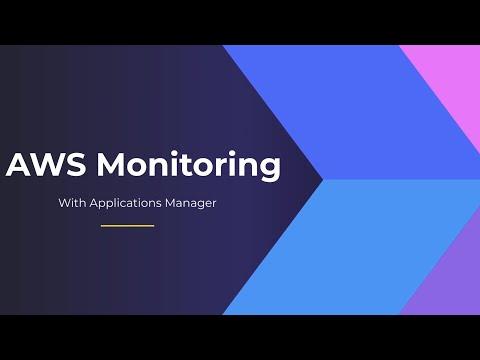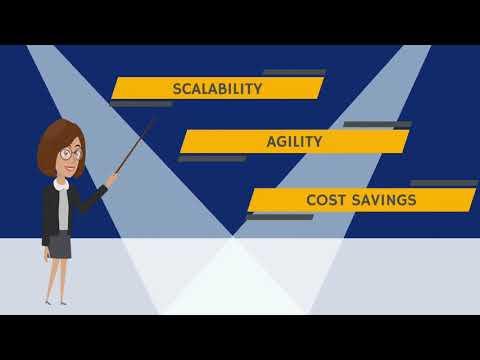Since Application Performance Management (APM) is a major focus of APMdigest, in Part 6 we investigate the relationship between OpenTelemetry and APM. This leads to some important questions:
How is OpenTelemetry different from APM?
Do you need both, or does OpenTelemetry replace APM?
Start with: A Guide to OpenTelemetry — Part 1
Start with: A Guide to OpenTelemetry — Part 2: When Will OTel Be Ready?
Start with: A Guide to OpenTelemetry — Part 3: The Advantages
Start with: A Guide to OpenTelemetry — Part 4: The Results
Start with: A Guide to OpenTelemetry — Part 5: The Challenges
APM Evolution Drives OpenTelemetry
According to Sajai Krishnan, General Manager, Observability, Elastic, OpenTelemetry has been driven by APM's evolution. "APM solutions were a revolution when they first appeared: organizations could finally see exactly what their applications were doing — and they could measure it. A new class of vendors was born, developing proprietary instrumentation techniques."
Download the 2022 Gartner Magic Quadrant for APM and Observability
"APM was a good start, but it soon became apparent, as applications moved to cloud-native distributed architectures, that it would not sufficiently scale," Krishnan continues. "APM vendors could not handle the amount of data that some customers were generating even 2 or 3 years ago. Customers began building their own solutions, which needed to be backed by a scalable datastore, and this proliferation of custom solutions created the need for standards. As a result, OpenTelemetry (or OpenCensus as it was called back in those days) came into the picture."
Krishnan says the development of value-added tools, like distributed tracing, triggered a second revolution. "Google set the industry down this path with their infamous Dapper paper about large-scale distributed tracing. The standards continue to evolve and include logs and metrics under the OpenTelemetry umbrella. However, the movement started with APM."
APM + OpenTelemetry: Working Together
Down the road, many experts see OpenTelemetry as an essential support for APM, feeding more data and potential insight into APM tools than was ever possible before.
"OpenTelemetry is first and foremost a solution for collecting telemetry data from applications and as such, is a data source for all APM solutions, regardless if they claim to provide observability or not," says Daniel Khan, Director of Product Management (Telemetry) at Sentry.
"APM tools can provide support for OpenTelemetry data formats," adds Pranay Prateek, Co-Founder of SigNoz. "As OpenTelemetry provides support for all telemetry signals — logs, metrics and traces — an APM tool can be based entirely on OpenTelemetry."
"OpenTelemetry will play a central role in APM," confirms Nitin Navare, CTO of LogicMonitor. "For typical IT operations management use cases, there are mature protocols such as SNMP, WMI, JMX, SSH, etc. However, for application requests/response telemetry, there has been no standard, and OTLP is fast becoming the de facto standard for exposing such data. Hence, APM and OpenTelemetry will go hand-in-hand in the long run."
"OpenTelemetry provides a more comprehensive stream of traces and metrics as input data for APM platforms to do their AI-magic and connect business metrics with their underlying software technologies," says Torsten Volk, Managing Research Director, Containers, DevOps, Machine Learning and Artificial Intelligence, at Enterprise Management Associates (EMA). "The more comprehensive the instrumentation, typically auto instrumentation plus some level of manual instrumentation to connect app code to infrastructure, the more this additional data can deliver relevant context for an APM to better monitor applications in a business centric manner."
APM and OpenTelemetry seem to complement OTel well. Maybe OpenTelemetry is exactly what APM needs to become the go-to solution for observability.
Cedric Ziel, Grafana Labs Senior Product Manager, says, "A consistent naming of key-metrics and attributes as well as a homogenous protocol will lead to analysis tools in the APM space becoming specialized in providing insights for OTel data. By this, OpenTelemetry can be viewed as the tool that provides a solid foundation for APM providers."
"In the future, we could see even more convergence, where it's less about APM and more about observability — a world where all of this data comes together using OpenTelemetry and is analyzed in context together," Krishnan from Elastic asserts. "OpenTelemetry-friendly vendors will have clean ways to co-exist with agent-based APM and OpenTelemetry, without duplication and with clean context-sharing. And while we aren't quite there yet as an industry, we may continue to see APM merging into the broader umbrella of observability."
APM's Evolution Away from Vendor Lock-in
Over time, OpenTelemetry may be able to help APM technology grow out of the current state of vendor lock-in.
"One of the biggest criticisms of APM tools is the potential for vendor lock in and having vital data that is siloed from the rest of your applications analytics," explains Jim Rapoza, VP and Principal Analyst at Aberdeen Strategy & Research, a division of Spiceworks Ziff Davis. "Many APM vendors understand this weakness and also know that being able to work seamlessly across applications and cloud-native services is a must have for modern DevOps teams. This is why we are seeing many major APM vendors supporting OpenTelemetry in order to integrate their platforms into today's cloud-native application environments."
"APM has always worked with traces, metrics, and logs to derive meaningful information," adds Alois Reitbauer, Chief Product Officer at Dynatrace. "However, the data sources used to be mostly proprietary. OpenTelemetry is changing this and moving towards a more unified way of ingesting data. This means data for new technologies will be available faster since they do not require a dedicated effort from the APM vendor whenever it is provided by the framework or middleware technology."
Replacing APM with OpenTelemetry
Other experts feel that OpenTelemetry could replace at least parts of what APM does.
"For many, APM is a black box and provides an even more narrow and opinionated set of statistics about your application," says Martin Thwaites, Developer Advocate at Honeycomb. "Tracing and the other types of signals offer a much more granular and helpful set of data to allow you to see more bespoke and actionable data. As OpenTelemetry starts to look at standardizing the Profiling space, we'll see even more signals that will remove the need for the Traditional APM tooling, focusing on more modern observability tools."
"A combination of tracing and profiling, powered by OpenTelemetry, can replace traditional APM use cases with more relevant and higher-resolution transactional data," Austin Parker, Head of Developer Relations at Lightstep by ServiceNow, agrees.
However, it is important to remember that APM can provide the backend visualization and analysis component that is missing in OpenTelemetry. Without APM, some other backend solution will still be necessary.
Joe Byrne, VP of Technology Strategy and Executive CTO at Cisco AppDynamics, points out that APM is still needed, however: "OpenTelemetry is capable of collecting and generating data from even the most complex environments in the IT stack, but separate tools are often required to turn the data into actionable insights. OpenTelemetry does not give insight into the actual application itself. Seeing the specific calls or transactions and the data associated with them which allows deeper business insights still requires a solid APM solution. Ultimately, it's only when you can pair the inside out view given by APM with the outside in view provided by OpenTelemetry that really gives the observability people want and need."
The Latest
The 2024 State of the Data Center Report from CoreSite shows that although C-suite confidence in the economy remains high, a VUCA (volatile, uncertain, complex, ambiguous) environment has many business leaders proceeding with caution when it comes to their IT and data ecosystems, with an emphasis on cost control and predictability, flexibility and risk management ...
In June, New Relic published the State of Observability for Energy and Utilities Report to share insights, analysis, and data on the impact of full-stack observability software in energy and utilities organizations' service capabilities. Here are eight key takeaways from the report ...
The rapid rise of generative AI (GenAI) has caught everyone's attention, leaving many to wonder if the technology's impact will live up to the immense hype. A recent survey by Alteryx provides valuable insights into the current state of GenAI adoption, revealing a shift from inflated expectations to tangible value realization across enterprises ... Here are five key takeaways that underscore GenAI's progression from hype to real-world impact ...
As software development grows more intricate, the challenge for observability engineers tasked with ensuring optimal system performance becomes more daunting. Current methodologies are struggling to keep pace, with the annual Observability Pulse surveys indicating a rise in Mean Time to Remediation (MTTR). According to this survey, only a small fraction of organizations, around 10%, achieve full observability today. Generative AI, however, promises to significantly move the needle ...
While nearly all data leaders surveyed are building generative AI applications, most don't believe their data estate is actually prepared to support them, according to the State of Reliable AI report from Monte Carlo Data ...
Enterprises are putting a lot of effort into improving the digital employee experience (DEX), which has become essential to both improving organizational performance and attracting and retaining talented workers. But to date, most efforts to deliver outstanding DEX have focused on people working with laptops, PCs, or thin clients. Employees on the frontlines, using mobile devices to handle logistics ... have been largely overlooked ...
The average customer-facing incident takes nearly three hours to resolve (175 minutes) while the estimated cost of downtime is $4,537 per minute, meaning each incident can cost nearly $794,000, according to new research from PagerDuty ...
In MEAN TIME TO INSIGHT Episode 8, Shamus McGillicuddy, VP of Research, Network Infrastructure and Operations, at EMA discusses AutoCon with the conference founders Scott Robohn and Chris Grundemann ...
Numerous vendors and service providers have recently embraced the NaaS concept, yet there is still no industry consensus on its definition or the types of networks it involves. Furthermore, providers have varied in how they define the NaaS service delivery model. I conducted research for a new report, Network as a Service: Understanding the Cloud Consumption Model in Networking, to refine the concept of NaaS and reduce buyer confusion over what it is and how it can offer value ...





